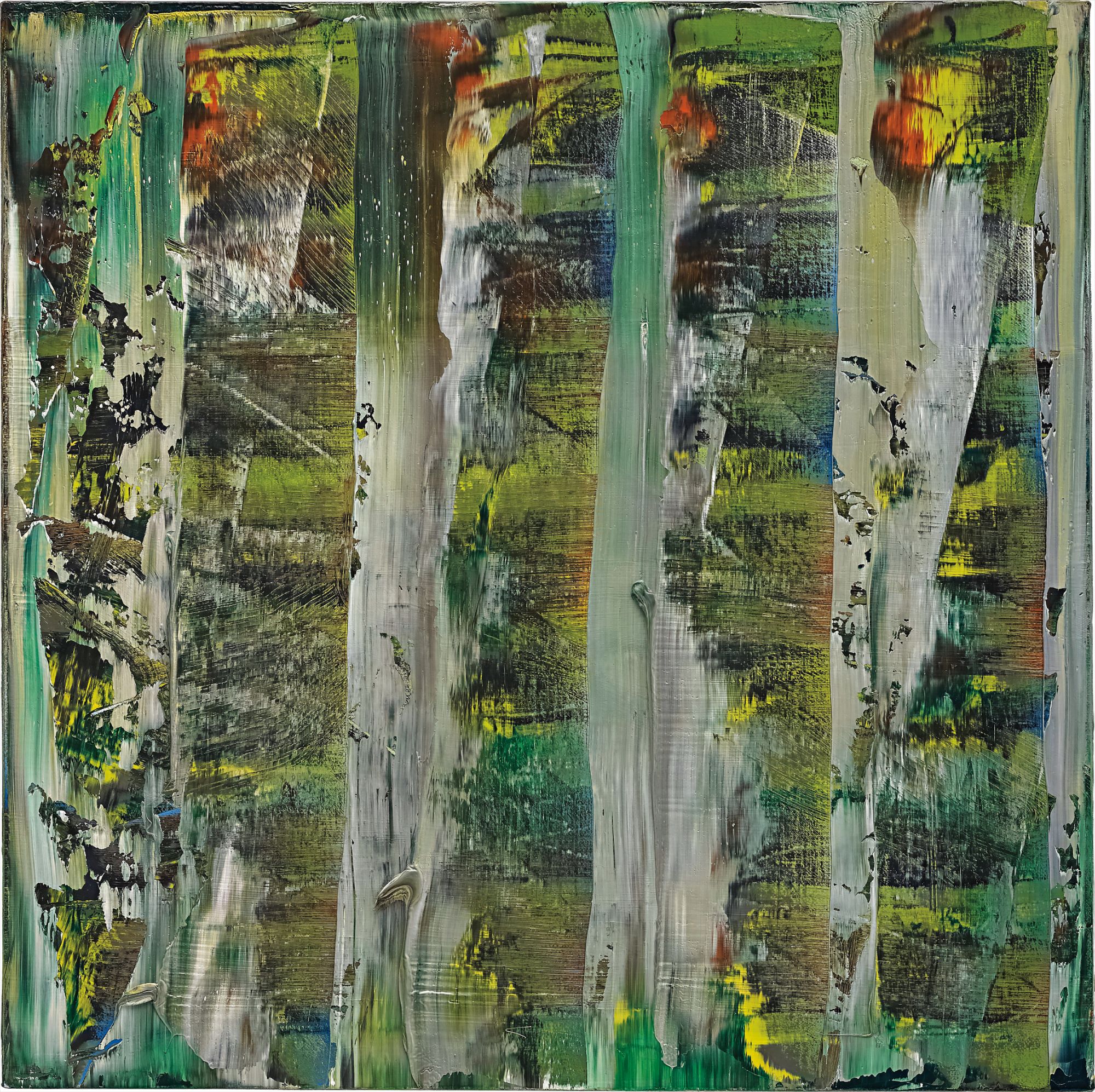

13◆Δ
Gerhard Richter
Abstraktes Bild (767-2)
Full-Cataloguing
From a purely visual point of view, the squeegee creates complex, kaleidoscopic surfaces that are filled with seductive texture and detail. Often applying wet paint to a dried surface, Richter is able to drag the paint in a manner that creates a marbled effect; at the same time, the glimmer of colours from previous layers adds a sense of density and complexity to the composition.
Richter’s practice of allowing the paint to dry in between his interventions with the surface serves a more practical, or conceptual purpose, in that it grants him a fresh perspective on each sally. In this way, he is able to revisit his canvas in an analytical manner, working in such a way as to remove any overly evocative or even tentatively figurative elements from the composition. Richter’s abstract paintings are intended to be precisely that: abstract paintings. He works hard to remove any hint of a motif, forcing the viewer to look again and again at his work in order to seek understanding.
While the lack of any legible element may seem frustrating, it also forces the viewer to open his or her mind, or interpretative faculties, appreciating each and every detail of the painted surface in the quest for elements to read. The lack of a motif in Abstraktes Bild fits with Richter’s outlook, itself coloured by his own experiences under various ideological realms in the twentieth century - Nazism, Socialism, Capitalism. He has removed any overt design, instead permitting the painting to suggest itself and evolve:
'No ideology. No religion, no belief, no meaning, no imagination, no invention, no creativity, no hope - but painting like Nature, painting as change, becoming, emerging, being-there, thusness; without an aim, and just as right, logical, perfect and incomprehensible’ (Gerhard Richter, 1985, quoted in H.-U. Obrist (ed.), Gerhard Richter: The Daily Practice of Painting. Writings and Interviews 1962-1993, trans. D. Britt, London, 1995, p. 121).
While this was already the case in Richter’s earlier abstract paintings, the use of the squeegee allowed him to tap into this notion of an ever-shifting, self-formulating order all the more eloquently. As Dietmar Elger has written:
'For Richter, the squeegee is the most important implement for integrating coincidence into his art. For years, he used it sparingly, but he came to appreciate how the structure of paint applied with a squeegee can never be completely controlled. It thus introduces a moment of surprise that often enables him to extricate himself from a creative dead-end, destroying a prior, unsatisfactory effort and opening the door to a fresh start. 'It is a good technique for switching off thinking,' Richter has said. 'Consciously, I can't calculate. But subconsciously, I can sense it. This is a nice "between' state"' (Gerhard Richter quoted in D. Elger, Gerhard Richter: A Life in Painting, trans. E.M. Solaro, Chicago & London, 2009, p. 251).
Gerhard Richter
German | 1932Powerhouse painter Gerhard Richter has been a key player in defining the formal and ideological agenda for painting in contemporary art. His instantaneously recognizable canvases literally and figuratively blur the lines of representation and abstraction. Uninterested in classification, Richter skates between unorthodoxy and realism, much to the delight of institutions and the market alike.
Richter's color palette of potent hues is all substance and "no style," in the artist's own words. From career start in 1962, Richter developed both his photorealist and abstracted languages side-by-side, producing voraciously and evolving his artistic style in short intervals. Richter's illusory paintings find themselves on the walls of the world's most revered museums—for instance, London’s Tate Modern displays the Cage (1) – (6), 2006 paintings that were named after experimental composer John Cage and that inspired the balletic 'Rambert Event' hosted by Phillips Berkeley Square in 2016.